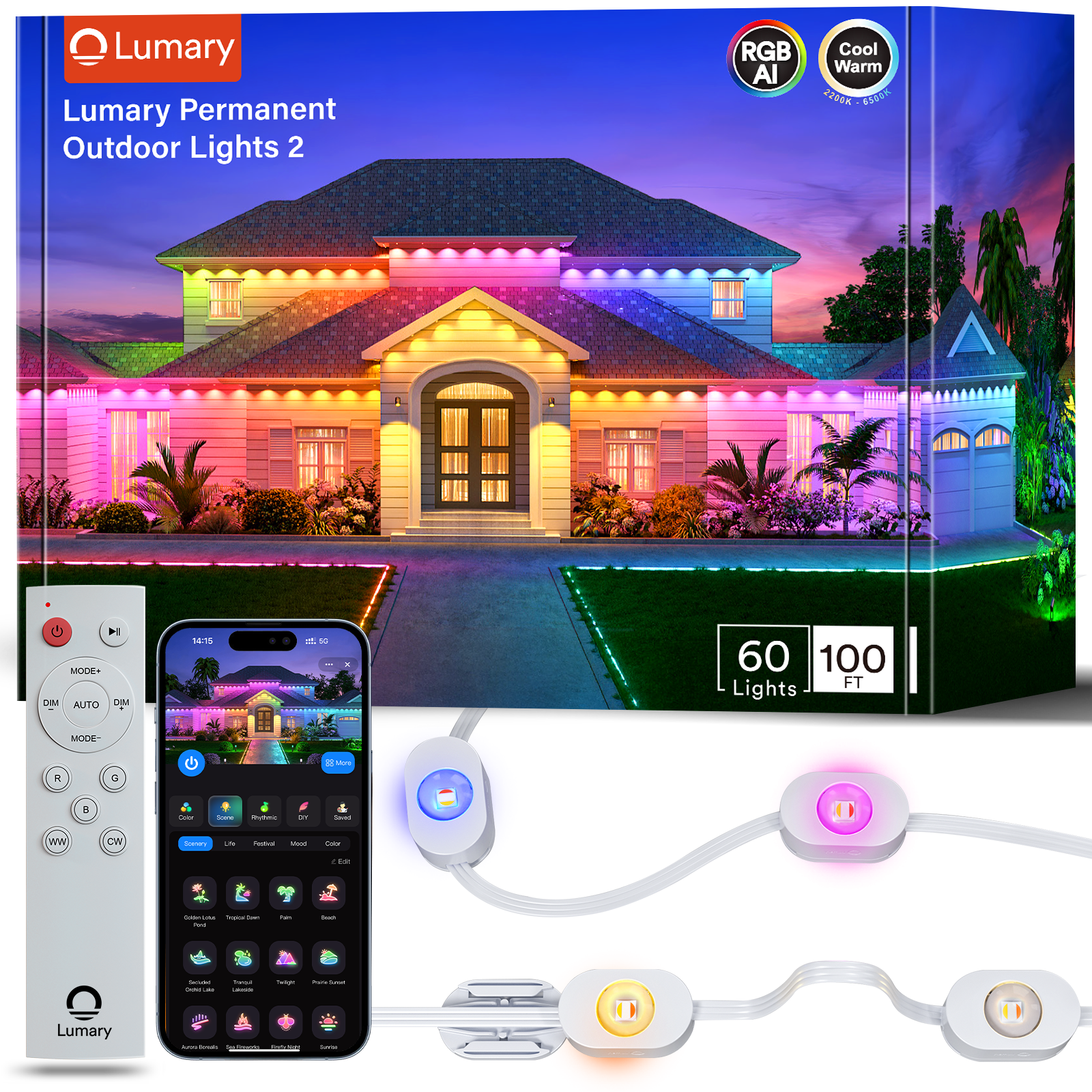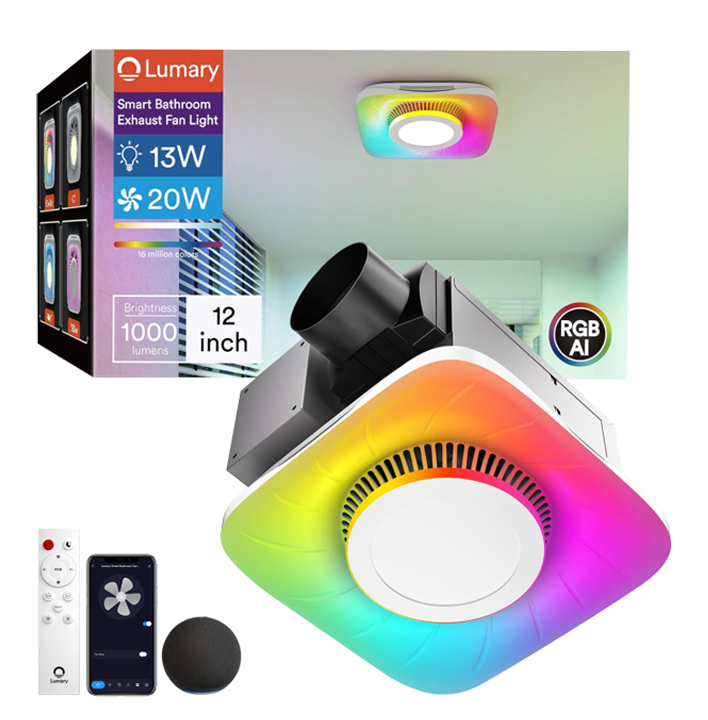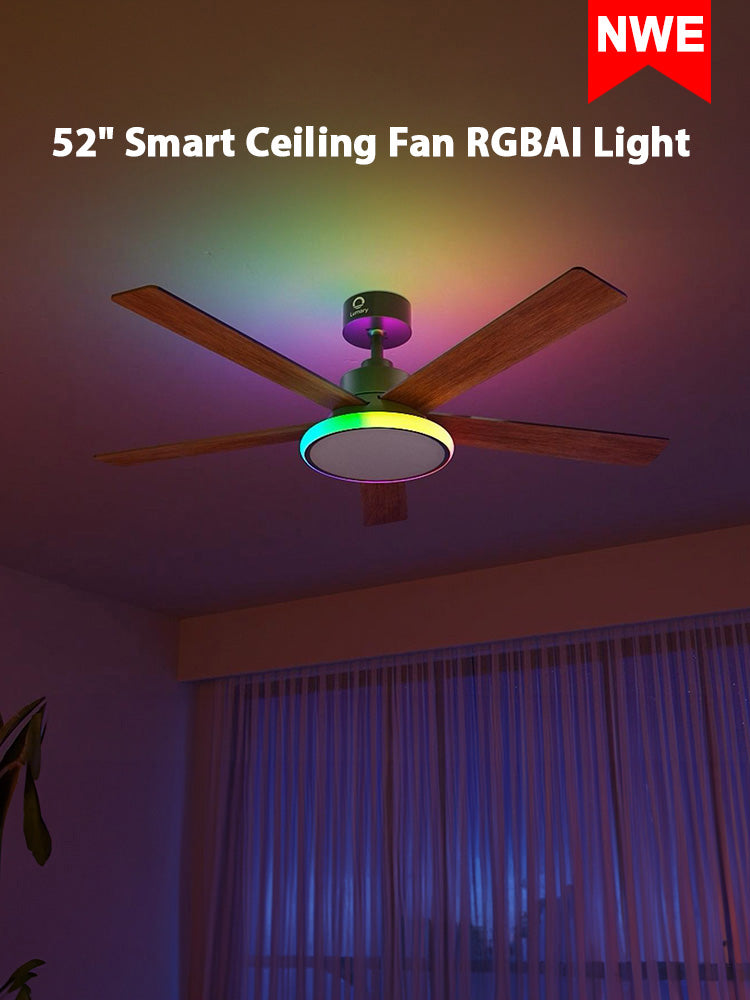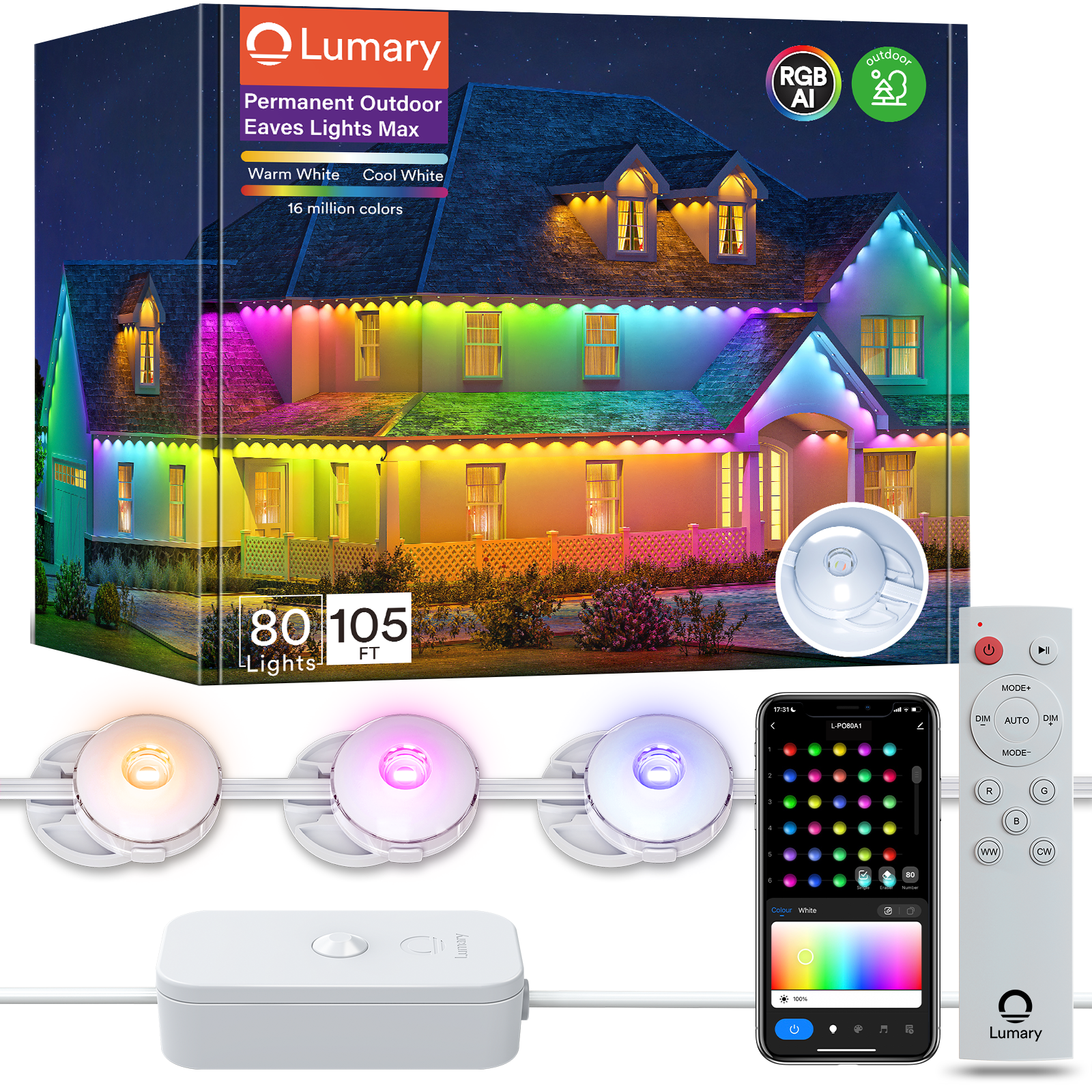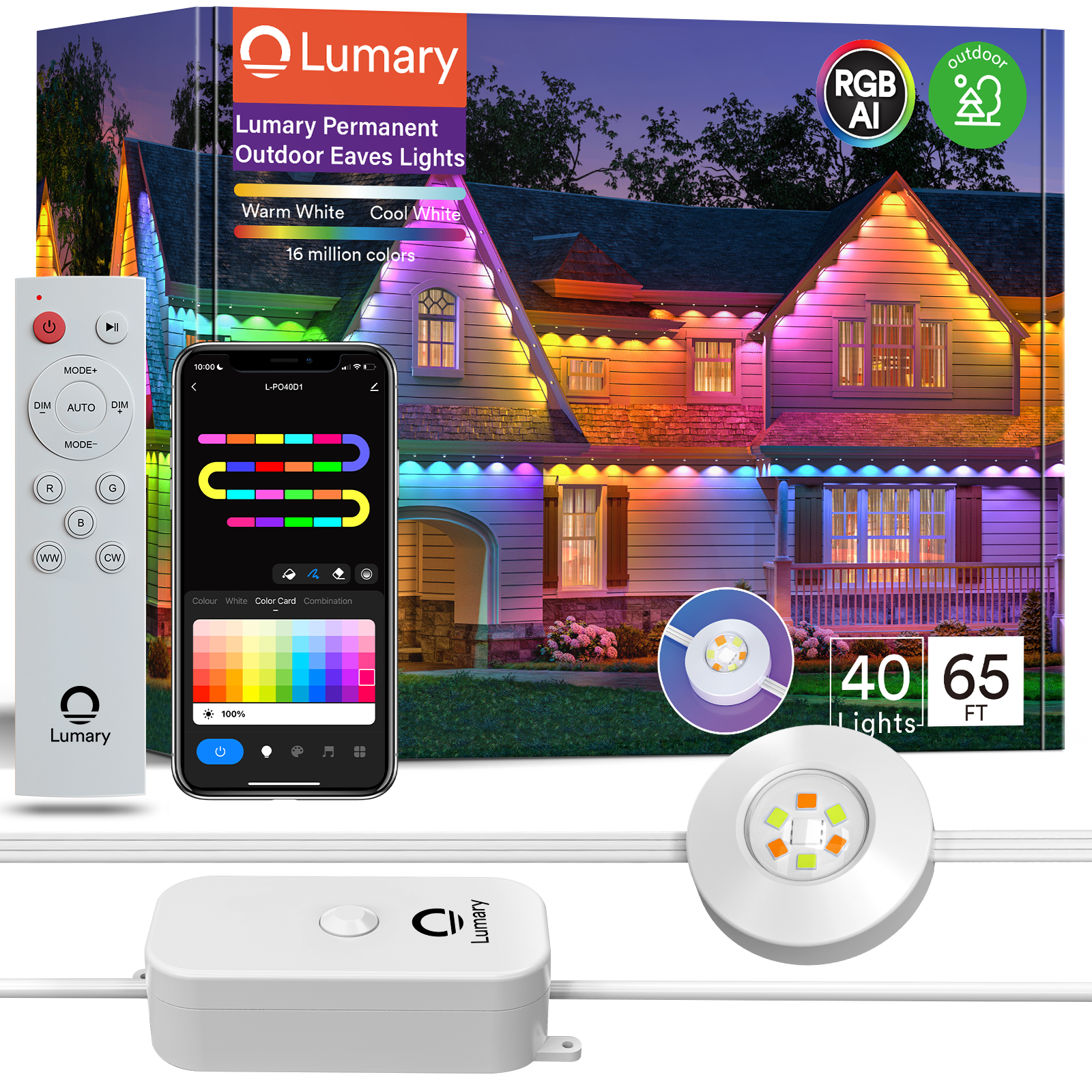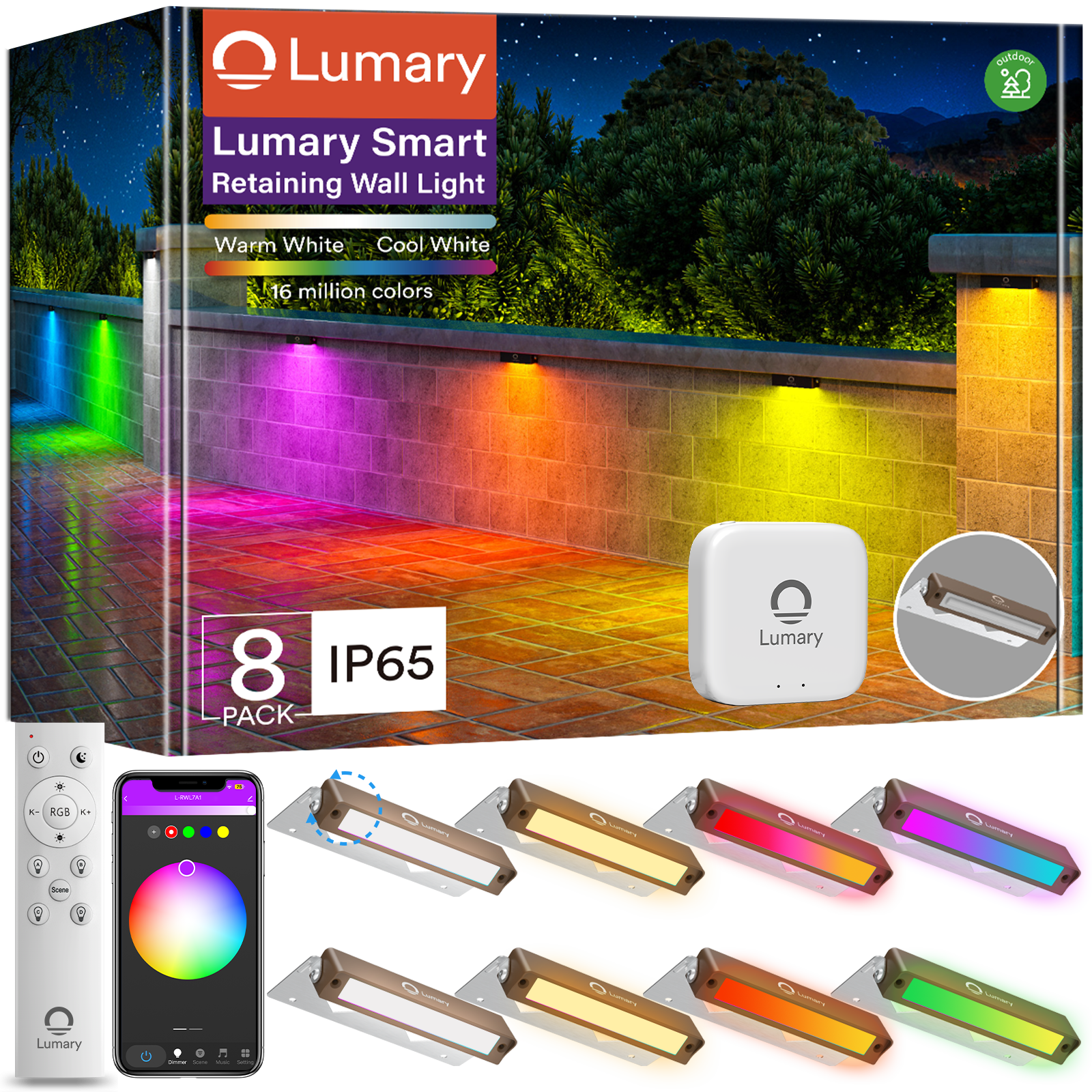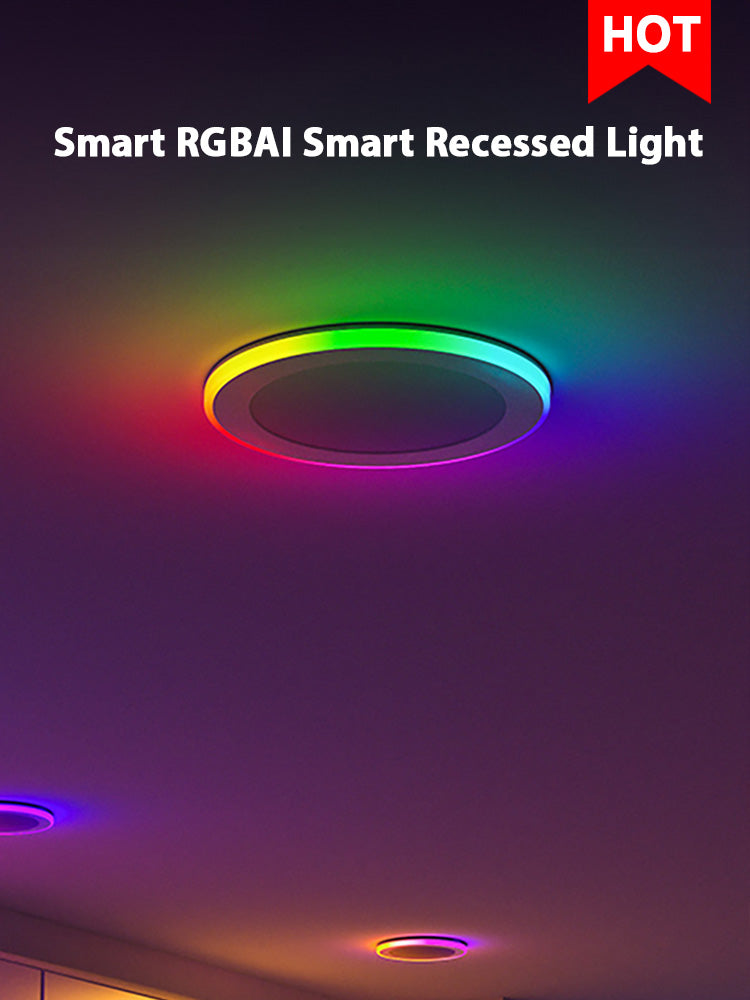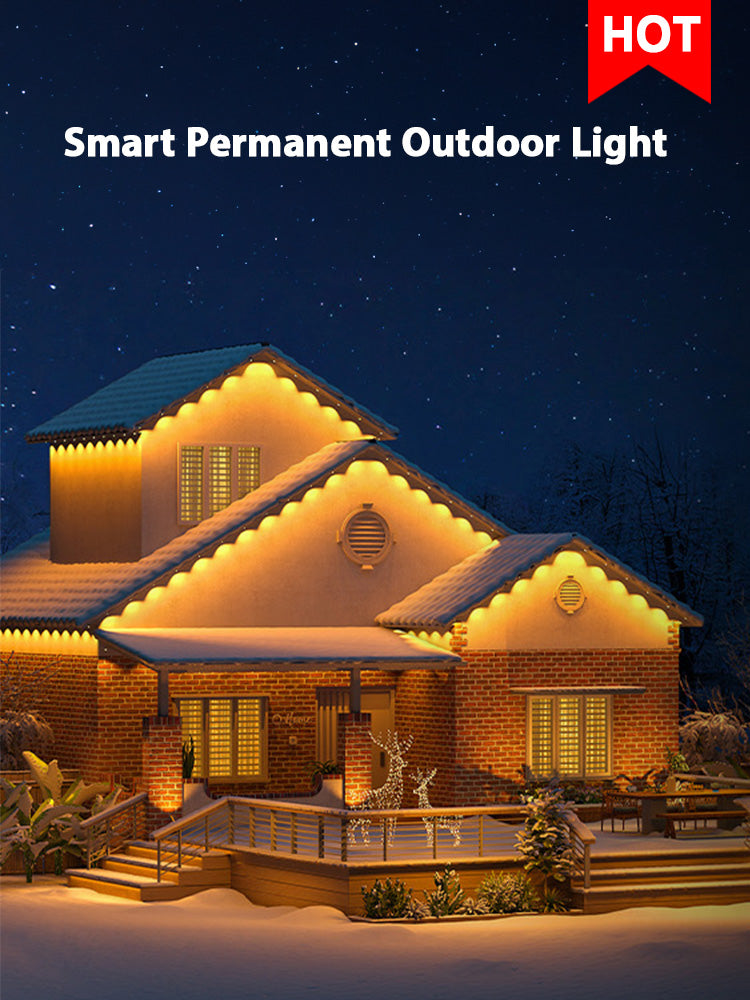Outdoor house lighting plays a crucial role in enhancing the beauty and safety of your home. Proper illumination can deter potential trespassers, cutting crime by 39%. LED lights, with their long lifespan and energy efficiency, dominate the market. These lights use at least 75% less energy than traditional bulbs. The Lumary RGBAI Smart WiFi Pathway Lights offer a perfect blend of functionality and style. These lights provide powerful illumination and customizable options. You can create an inviting atmosphere for any occasion. Illuminate your outdoor spaces with confidence and style.
Understanding Outdoor House Lighting

Outdoor house lighting can transform your home's exterior into a welcoming and secure space. Let's dive into the different types of lighting and technologies that can enhance your outdoor areas.
Types of Outdoor House Lighting
Ambient Lighting
Ambient lighting provides general illumination for your outdoor spaces. This type of lighting creates a comfortable atmosphere, making it ideal for patios and decks. You can use wall-mounted fixtures or hanging lights to achieve this effect. Ambient lighting ensures your outdoor areas remain inviting and functional.
Task Lighting
Task lighting focuses on specific areas where you need more light. Think about pathways, driveways, or steps. This lighting type helps prevent accidents by illuminating potential hazards. Consider using pathway lights or bollard lights for effective task lighting. Task lighting enhances safety and usability in your outdoor spaces.
Accent Lighting
Accent lighting highlights particular features of your home or garden. Use it to draw attention to architectural details, sculptures, or plants. Spotlights and uplights work well for accent lighting. This type of lighting adds drama and interest to your outdoor environment.
Lighting Technologies

LED Lighting
LED lighting technology offers numerous benefits for outdoor house lighting. LEDs are energy-efficient, durable, and long-lasting. They consume less energy and have a lifespan of up to 40,000 hours. LEDs emit lower heat compared to traditional bulbs, making them safer and more reliable. These lights are also resistant to shock and vibration, ensuring robust performance.
Solar Lighting
Solar lighting harnesses the power of the sun to illuminate your outdoor spaces. Solar lights are eco-friendly and cost-effective. They charge during the day and automatically turn on at night. Solar lighting requires minimal maintenance and installation. This option works best in areas with ample sunlight exposure.
Smart Lighting Options
Smart lighting options offer advanced control and customization for your outdoor house lighting. You can manage these lights through apps, voice assistants, or remote controls. Smart lighting allows you to adjust brightness, color, and schedules to suit your needs. This technology enhances both security and aesthetic appeal.
Planning Your Outdoor Lighting
Planning outdoor lighting involves more than just picking fixtures. You need to assess your needs and create a detailed plan. This process ensures that outdoor house lighting serves its purpose effectively.
Assessing Your Needs
Identifying Key Areas
Start by identifying key areas around your home that require lighting. Think about pathways, driveways, and entry points. Consider social spaces like patios or decks where gatherings happen. Highlighting architectural features can also add charm to your home. Identifying these areas helps you focus on where lighting is most needed.
Determining Lighting Purposes
Determine the purpose of each light. Some lights enhance safety by illuminating dark corners. Others boost security by deterring intruders. Lighting can also create a cozy atmosphere for social spaces. Each purpose guides the type of lighting you choose. Clear goals make the planning process smoother.
Creating a Lighting Plan
Sketching Your Layout
Sketch a layout of your outdoor space. Mark the key areas identified earlier. Visualize where each light will go. A sketch helps you see how the lighting will flow. This step ensures that all areas receive adequate illumination. A well-thought-out layout prevents over-lighting or under-lighting any space.
Considering Power Sources
Consider the power sources for your lighting. Decide if you want wired or solar options. Wired lights offer consistent power but require more installation work. Solar lights are eco-friendly and easy to install. However, they depend on sunlight. Choose based on your area's climate and your preference. Ensuring reliable power sources keeps your outdoor house lighting functional and efficient.
Design Considerations
When choosing outdoor house lighting, design considerations play a vital role in creating a harmonious and functional space. Let's explore how to balance aesthetics and functionality.
Aesthetic Factors
Matching Home Style
Outdoor house lighting should complement your home's architectural style. Traditional homes might benefit from classic lanterns or sconces. Modern homes often look best with sleek, minimalist fixtures. Matching the lighting style with your home's design enhances curb appeal and creates a cohesive look.
Color Temperature Choices
Color temperature affects the mood of your outdoor spaces. Warm white lights create a cozy and inviting atmosphere. Cool white lights offer a crisp and modern feel. Consider the ambiance you want to achieve when selecting color temperatures. The right choice can transform the look and feel of your exterior.
Functional Aspects
Ensuring Safety and Security
Safety and security are top priorities for outdoor house lighting. Illuminated pathways and entrances prevent accidents and tripping hazards. Well-lit areas deter potential intruders, enhancing security. Proper lighting ensures safe navigation and peace of mind for you and your guests.
Weather Resistance and Durability
Outdoor lighting fixtures must withstand various weather conditions. Look for fixtures made from durable materials like aluminum or stainless steel. Weather-resistant designs ensure longevity and performance. Reliable lighting means less maintenance and more enjoyment of your outdoor spaces.
Practical Tips and Checklists
When it comes to outdoor lighting, a few practical tips can make all the difference. Let's explore some essential advice to help you get started.
Installation Tips
Hiring Professionals vs. DIY
Thinking about installing outdoor lighting yourself? Many homeowners find this a rewarding project. You can save money and enjoy the satisfaction of completing a task on your own. However, understanding the process is crucial. Some installations might require expertise beyond basic skills. If you feel unsure, hiring a professional ensures high-quality results. A professional can handle complex wiring and design elements with ease. One customer shared, "From design to installation, they were very easy to work with, very professional, and did a high-quality job." Consider your comfort level and the complexity of the project when deciding between DIY and professional help.
Maintenance and Upkeep
Keeping your outdoor lighting in top shape requires regular maintenance. Clean fixtures to remove dirt and debris. This helps maintain brightness and efficiency. Check for any damaged wires or bulbs. Replace them promptly to avoid further issues. Regularly inspect solar panels if you use solar lights. Ensure they receive adequate sunlight for optimal performance. Simple upkeep keeps your lighting system running smoothly and extends its lifespan.
FAQs
Common Concerns
Outdoor lighting often raises common concerns. Many people worry about energy consumption. LED lights offer an energy-efficient solution. They use less power and last longer than traditional bulbs. Another concern involves weather resistance. Choose fixtures made from durable materials like aluminum or stainless steel. These materials withstand harsh conditions and reduce maintenance needs. Addressing these concerns can lead to a more satisfying lighting experience.
Troubleshooting Issues
Encountering issues with your outdoor lighting can be frustrating. Start by checking the power source if lights fail to turn on. Ensure connections are secure and switches are in the correct position. For solar lights, verify that panels receive enough sunlight. Adjust their placement if necessary. Flickering lights might indicate a loose bulb or connection. Tighten bulbs and check wiring for damage. Troubleshooting helps resolve minor problems quickly and efficiently.
Outdoor lighting transforms your home's exterior into a stunning and safe haven. The right lighting enhances beauty, boosts security, and creates inviting spaces. Implement the tips shared in this guide to achieve the perfect lighting setup. Choose fixtures that match your style and needs. Maintain your lights for long-lasting performance. Outdoor lighting offers endless possibilities. Illuminate your home with confidence and creativity. Enjoy the enhanced ambiance and safety that thoughtful lighting brings.

